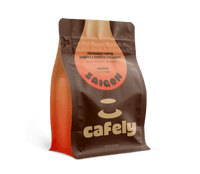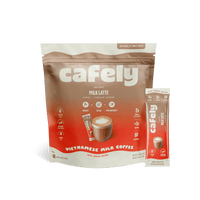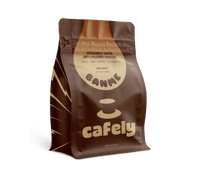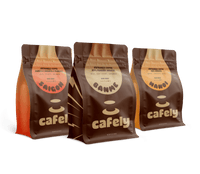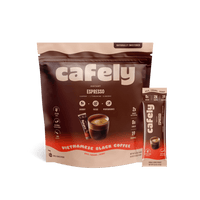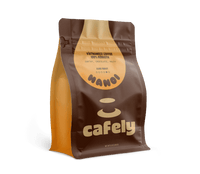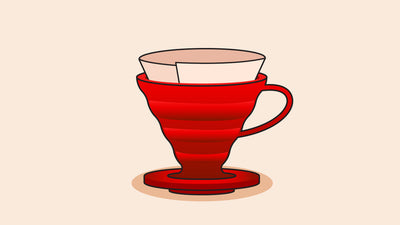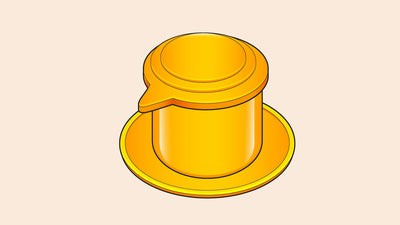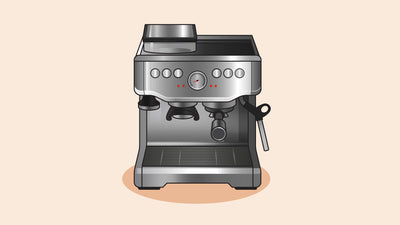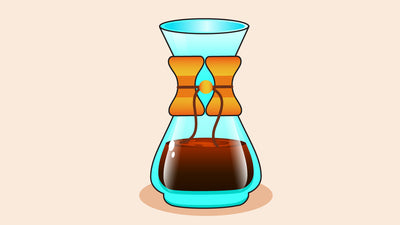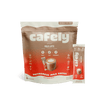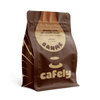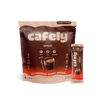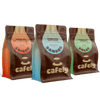The moka pot works by forcing a small amount of vaporized water through finely ground coffee. The extraction is short but highly efficient. It's similar to how an espresso machine works.
The benefit of this brewing device is that you can prepare a very strong, concentrated coffee in minutes without expensive equipment.
Selecting the ideal coffee means catering to the strengths and weaknesses of this classic brewing device.
Top Recommendations:
- Cafely’s SaiGon OG (Traditional Butter-Roast Coffee) — For a rich crema and smooth but robust flavor.
- Cafely’s DaLat (100% arabica) — For a smoother, traditional taste for making lattes & cappuccinos.
- Cafely’s BanMe (100% Peaberry Coffee) — For an extra strong, highly caffeinated stovetop espresso.
The Best Types of Coffee Beans For a Moka Pot
In general, medium-roast and medium-fine grind coffees produce the best flavor when using the moka pot. These coffees resist the high heat and pressure of moka extraction, producing a coffee with a rich, full-bodied flavor.
Dark roast coffees work great, too, but will produce very strong coffee that needs to be balanced with milk or cream.
A blend with about 20–50% robusta will add extra body and more delicious crema. Our SaiGon OG is made with 40% robusta and roasted using a traditional Vietnamese butter-roast process. This blend produces an exceptional velvety crema.
 Related: Where to buy Authentic Vietnamese Coffee?
Related: Where to buy Authentic Vietnamese Coffee?
Selecting By Grind Size
The best grind size to use with a moka pot is medium-fine.
Medium grind also works but may produce a weaker coffee. Fine grind makes a nice, strong coffee, but may be too bitter and chalky for some.
It’s best to grind your beans right before you’re ready to brew. This means the best option is going to be whole-bean coffee rather than pre-ground.
If selecting pre-ground coffee, make sure to double-check that the grind size is medium-fine.
We prepare all of our pre-ground coffee using the medium-fine setting — perfect for moka pot brewing.
 Selecting By Roast
Selecting By Roast
The moka pot can handle virtually all roast levels but tends to do better with medium-roast arabicas or medium-dark/dark robustas.
Light roast will work in a moka, but many people will find unexpected flavors with this combination.
Sometimes, these flavors are welcomed; other times, they make the coffee less appealing. This is because the moka pots' fast but efficient extraction sometimes concentrates lighter elements abundant in light roast coffee but leaves behind some of the heavier elements that help balance the flavors.
 Selecting By Species
Selecting By Species
Despite there being well over 120 individual species of Coffea, the only two you’re likely to find on the market are arabica and robusta.
Both produce a delicious cup of coffee, but there are some key differences between them. Arabica tends to be lighter, with more complex and fruity flavors — while robusta is much bolder, stronger, and highly caffeinated.
Both robusta and arabica work great in a moka pot. Arabicas make delicious Americanos (adding more hot water to the final brew) but tend to lack sufficient crema to make ideal cappuccinos, lattes, or flat whites. For these, an arabica-robusta blend is usually the best option.
Pure robusta coffees work, too, but usually need to be mixed with something sweet to round the rough, bitter edges of this species. Moka pots can be used to make delicious Vietnamese coffee — just brew, add sweetened condensed milk, and ice.
 Selecting By Origin
Selecting By Origin
Coffee beans develop unique flavor profiles based on the soil in which they are grown. For darker robusta blends, coffees from volcanic regions like Vietnam and Indonesia tend to produce the best coffee.
For arabica, opt for origins with very high altitudes, such as Colombia or Ethiopia. These coffees are less acidic, which minimizes the chances of extracting undesirable flavors when brewing with a moka pot, especially in the top coffee-drinking nations.

Coffee to Avoid: Moka Pot Brewing

Most coffees will work fine in a moka pot, but there are a few features that make a coffee less than ideal:
- Highly acidic coffees — Moka pots are very efficient at extracting the lighter elements in coffee, many of which impart an acidic flavor.
- Coffees ground to fine, medium-coarse, or coarse — Like most brewing methods, it’s critical to get the grind right. If ordering pre-ground beans, make sure it says “medium-fine” or “medium” grind on the package.
- Light roast coffee — Coffees with a lighter roast tend to have a high concentration of lighter, more nuanced flavors. The moka pot often disrupts this balance by extracting too many of these light notes and too few of the heavier base notes.
- Low-quality robusta coffee — Robusta beans can be used in a moka, but the resulting brew is very strong and tends to lack the depth available from longer brewing methods (like a French press or phin filters). Only very high-grade robustas should be used in a moka pot.
How Does a Moka Pot Work?
The moka pot is relatively straightforward, but there are a few important things to keep in mind.
General instructions for brewing with a moka pot:
- Measure & grind your coffee.
- Assemble your moka pot.
- Wait for the pot to start brewing.
- Turn down the heat & allow your pot to finish brewing.
- Pour and mix with milk, sweetener, or more hot water & enjoy.
Related: How to Brew Coffee Using a Moka Pot (Expert Tips)
Tips For Getting the Most Out of a Moka Pot
Using a moka pot couldn’t be simpler, but there are a few tips and tricks to get the best brew possible.
Get the Grind Right

The moka pot works best with medium-ground coffee, but medium-fine will work well, too. The consistency should be similar to sand.
If the coffee is ground too fine, it will either clog the filter (which can be dangerous if the safety valve is also dysfunctional) or produce an overly chalky coffee.
If the coffee is ground too coarse, it will produce a weak coffee.
Don’t Overextract
One of the most common mistakes people make when brewing with a moka pot is over-extracting the coffee. As soon as the coffee starts coming out of the spout at the top, turn the heat way down to 50% or below.
If the pressure builds too high, you risk overextracting your beans — which will produce harsh flavors.
FAQs: Brewing With a Moka Pot

1. What is the best grind size for coffee in a moka pot?
The ideal grind size for a moka pot is medium or medium-fine, which is slightly coarser than espresso grind but finer than drip coffee grind. This ensures optimal extraction without clogging the filter.
2. Can I use espresso roast beans in my moka pot?
Yes, espresso roast beans work great in a moka pot. These beans are typically dark roasted and produce a very strong coffee that may need to be balanced with milk or cream.
3. How do I prevent my coffee from tasting bitter when using a moka pot?
To prevent bitterness, avoid overpacking the coffee in the filter basket, use the correct grind size, and monitor the brewing process closely — turning down the heat when the coffee starts to dribble into the collection chamber.
4. How can I achieve a smooth crema with my moka pot?
Using a blend with 20–50% robusta beans can help produce a nice silky crema in the final cup. Beans that have been roasted with butter are even better. For optimal crema, buy whole beans and grind them yourself right before brewing.
